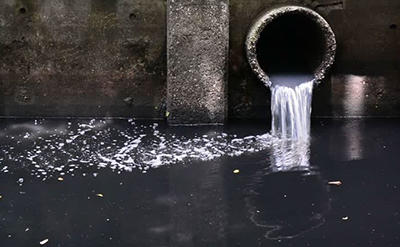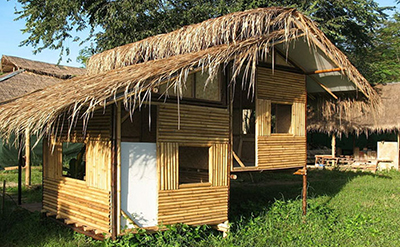Blackwater Treatment
A Sustainable Management of Wastewater from a Waste to a Valuable Water Resource
The sewerage from our houses can be divided into two types, Greywater and Blackwater. Greywater consists of wastewater from Kitchen, washing basins, laundry, sinks, and showers. While the blackwater consists of waste products from toilets mainly consisting of urine and feces. They should be collected separately in case of an onsite wastewater treatment plant. Separated blackwater has a higher concentration of pollutants and solid waste and its treatment is more difficult than greywater. The concept of an onsite wastewater differentiable treatment system can be one of the suitable systems for off-the-grid areas where there is no central sewerage system. In large parts of the world, centralized sewerage is still not available. If reuse purpose is focused on irrigation only advanced treatment technology for nitrogen, phosphorus removal would not be necessary. The most important point is to be low cost and simple because most of those who need greywater reuse are low-income people.

Natural Blackwater Treatment System:
Blackwater can be treated with two processes if you are opting for on-site wastewater treatment.
-
- Evaporation Tanks Treatment
- Septic tank with leaching beds

Leaching Beds Treatment:
This is one of the best blackwater on-site treatment systems. This method consists of collecting the blackwater in the septic tank having 2 chambers and then further treating the blackwater with leaching beds. The septic tank can be of concrete, fiberglass, or polyethylene material. The size of the septic tank depends on the amount of wastewater. For a house with 7-8 people, the size of the septic tank can be 1m long, 1m wide, and 1m deep. For this system to work, you need to choose the right kind of septic system for your household size and soil type, and you need to maintain it regularly. This type of waste-treatment system has 3 components.
- Septic Tank
- Distribution Box
- Leaching Beds/Chamber
1- Septic Tank:
A septic tank is an enclosed watertight container that collects and provides primary treatment of wastewater by separating solids from the wastewater. It removes the solids by holding wastewater in the tank and allowing the settleable solids to settle to the bottom of the tank while the floatable solids (oil and greases) rise to the top. To provide time for the solids to settle, the tank should hold the wastewater for at least 24 hours. A typical septic tank has two compartments. The septic tank can be of any materials discussed above. The first compartment should be a little bit wider than the second compartment as the majority of the solid waste deposition takes place in the first compartment. These two compartments are connected through a baffle (a Tee pipe) and separated with a wall. A precast septic tank is mostly used instead of making the one at the site.

Wastewater from the toilet bowl with feces goes down to the septic tank. Then it goes to the 1st compartment where it is segregated into three layers. Solid waste (sludge) settles down at the bottom. Liquid and scum also get segregated based on their densities (high-density material floats on the low-density material). A baffle or tee pipe transfers wastewater to the second compartment where the same phenomenon takes place. The wastewater leaving the second compartment is effluent and is sent to the secondary treatment system of leaching beds or chambers. A septic tank requires maintenance from time to time. Septic tanks should be designed by professionals. If the septic tank is designed wrongly, groundwater can get contaminated with untreated water. Note that the elevation of the septic tank should be at the highest point than the leaching field or vegetation. A septic tank must have access hatchers for maintenance. Note that the elevation of the septic tank should be at the highest point than the leaching field or vegetation. From septic tank wastewater goes to distribution box and from distribution box, it is divided into leaching drains. An effluent filter can be placed in the outlet tee for additional filtering of the wastewater. The effluent filter removes additional solids from the wastewater and keeps them from clogging the absorption field and causing it to malfunction prematurely.

2- Distribution Box:
The distribution box is a component of the leach field system. The job of the distribution box is to evenly distribute the wastewater into the leach field. The water flows downhill where the distribution box is placed. This allows the water to flow into the box from the septic tank and then onto the leach field. Once the wastewater flows out of the septic tank it will move into the septic distribution box and out to the leach field lines. The size and shape of the box depend on the type of septic tank you have. A distribution box is most commonly made out of concrete or plastic and has several openings for the leach field lines where the wastewater can flow out. Concrete boxes often work better since the material is sturdier than plastic.
3- Leaching Beds/Chamber:
If there is no intention or no need to reuse wastewater or greywater, leach fields can offer an opportunity for a partial treatment of greywater or wastewater effluents from primary treatment. It offers a safe way of discharging it to the environment and therewith recharging groundwater bodies. The pre-treated effluent flows by gravity or is pumped to a leach field for disposal. Pre-settled effluent is fed into a piping system (distribution box and several parallel channels) that distributes the flow into the subsurface soil for absorption and subsequent treatment.
Your Septic System – Youtube Video
Blackwater Treatment – Download PDF
Blackwater Treatment with Septic Tank & Leaching Beds/Drains (WhitePaper Explanation in Urdu/Hindi) – Youtube Video




